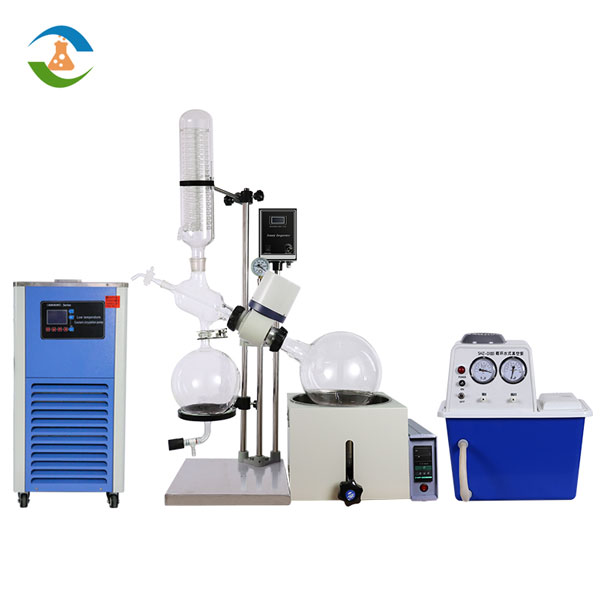The benchtop rotary evaporator is a versatile and essential laboratory equipment widely used in various scientific and industrial applications. This innovative device facilitates the separation of solvents from samples through the process of evaporation, making it an indispensable tool for researchers and professionals across different fields. Its compact size, ease of use, and efficiency have made it a preferred choice for laboratories dealing with small to medium-scale operations. In this article, we will explore the applications of a large scale rotary evaporator, its working principle, and a real-life case study showcasing its practical utility.
Introduction of benchtop rotary evaporator
The rotary evaporator, also known as a rotovap or rotavapor, was first introduced in the 1950s and has since become a crucial piece of equipment in various laboratory settings. Its primary function is to separate solvents from samples, allowing for the concentration of substances and purification of compounds. The benchtop version of the rotary evaporator is particularly popular due to its space-saving design and ease of installation on laboratory benches.

Working Principle of Benchtop Rotary Evaporator
Before delving into its applications, it’s essential to understand the underlying working principle of the benchtop rotary evaporator. The fundamental concept revolves around the reduction of pressure and controlled heating to expedite the evaporation process. The key components of the rotary evaporator are:
a. Evaporation Flask: This is the container where the sample mixture is placed.
b. Rotating Flask: It rotates to increase the surface area of the sample exposed to the solvent, facilitating faster evaporation.
c. Heating Bath: The flask is immersed in a water or oil bath, where the heating temperature can be controlled.
d. Condenser: The evaporated solvent vapor travels through the condenser, where it condenses back into a liquid state.
e. Collection Flask: The condensed solvent collects in this flask, leaving behind the concentrated sample.
f. Vacuum Pump: The vacuum pump reduces the pressure inside the system, further lowering the boiling point of the solvent.
Applications of Benchtop Rotary Evaporator
The benchtop rotary evaporator finds its applications in a wide range of industries and research fields. Let’s explore some of the prominent applications:
a. Pharmaceutical Industry:
In drug development and pharmaceutical research, benchtop rotary evaporators are frequently used to purify and concentrate active pharmaceutical ingredients (APIs) from reaction mixtures. They help in solvent removal, allowing researchers to obtain highly pure compounds for further analysis.
b. Chemistry Laboratories:
Chemistry laboratories utilize benchtop rotary evaporators for various purposes, including solvent recycling, extraction of natural products, and purification of synthesized compounds. The ability to handle small to medium sample sizes makes it ideal for academic research and industrial R&D.

c. Food and Beverage Industry:
In the food and beverage industry, the rotary evaporator plays a crucial role in aroma extraction, where it helps isolate and concentrate desirable flavors and fragrances from natural products. This technique is essential for creating high-quality food additives and beverages.

d. Environmental Analysis:
Environmental scientists often employ benchtop rotary evaporators to analyze water and soil samples. They use the device to concentrate trace pollutants and extract environmental contaminants for accurate analysis.
e. Essential Oil Extraction:
Agricultural and botanical research benefits from rotary evaporators for essential oil extraction. By evaporating the solvent used in the extraction process, researchers obtain pure and concentrated essential oils from plants.

Case Study: Solvent Recycling in a Research Laboratory
To illustrate the practical application of a benchtop rotary evaporator, let’s consider a case study from a research laboratory focused on organic synthesis. The lab regularly handles large volumes of solvents, and their disposal costs were becoming a significant concern. To address this issue, they implemented a solvent recycling program using a benchtop rotary evaporator.
Experiment Setup:
The researchers collected used solvents, such as ethyl acetate, methanol, and dichloromethane, from various experiments. Instead of disposing of these solvents as waste, they decided to recycle and reuse them.
Process:
The collected solvent mixture was poured into the evaporation flask of the benchtop rotary evaporator. The flask was then rotated at a controlled speed to maximize the surface area exposed to the vacuum. The heating bath was set to an appropriate temperature, considering the boiling points of the solvents in the mixture.


As the solvent mixture evaporated, the condenser efficiently captured the vapor and converted it back into its liquid form, which was then collected in a separate flask. The residual concentrated solvents, contaminants, and impurities remained in the evaporation flask, ready for proper disposal.
Tips for Efficient Use of Benchtop Rotary Evaporator
To make the most of the benchtop rotary evaporator and ensure optimal results, consider the following tips:
a. Appropriate Flask Size: Use flasks that match the sample volume, as oversized flasks can lead to inefficient evaporation and longer processing times.
b. Regular Maintenance: Conduct regular maintenance and cleaning of the rotary evaporator to prevent cross-contamination and ensure accurate results.
c. Proper Cooling: Ensure adequate cooling of the condenser to prevent solvent vapor from escaping into the laboratory environment.
d. Optimal Vacuum Level: Adjust the vacuum level as per the solvent’s boiling point to enhance the efficiency of the evaporation process.
e. Safety Precautions: Always follow safety guidelines when operating the rotary evaporator, as it involves the use of heat and volatile solvents.
